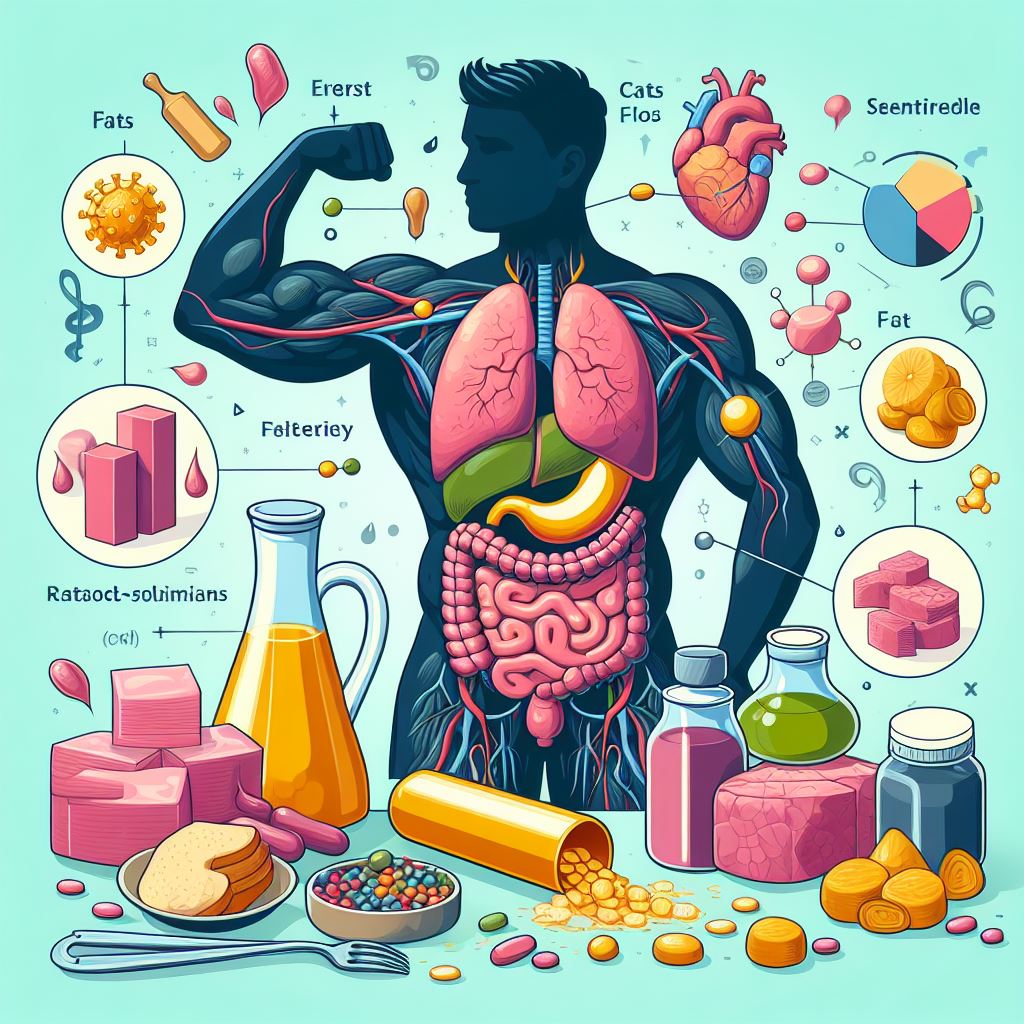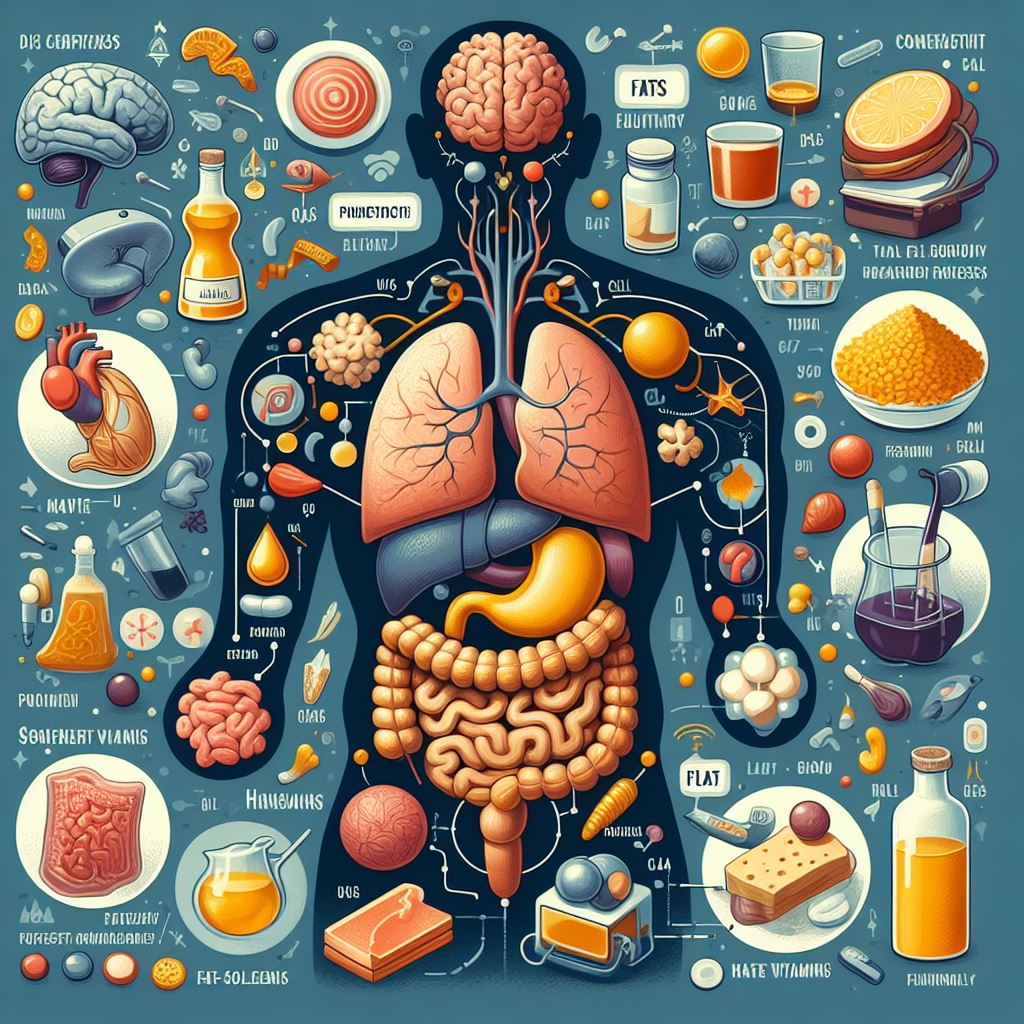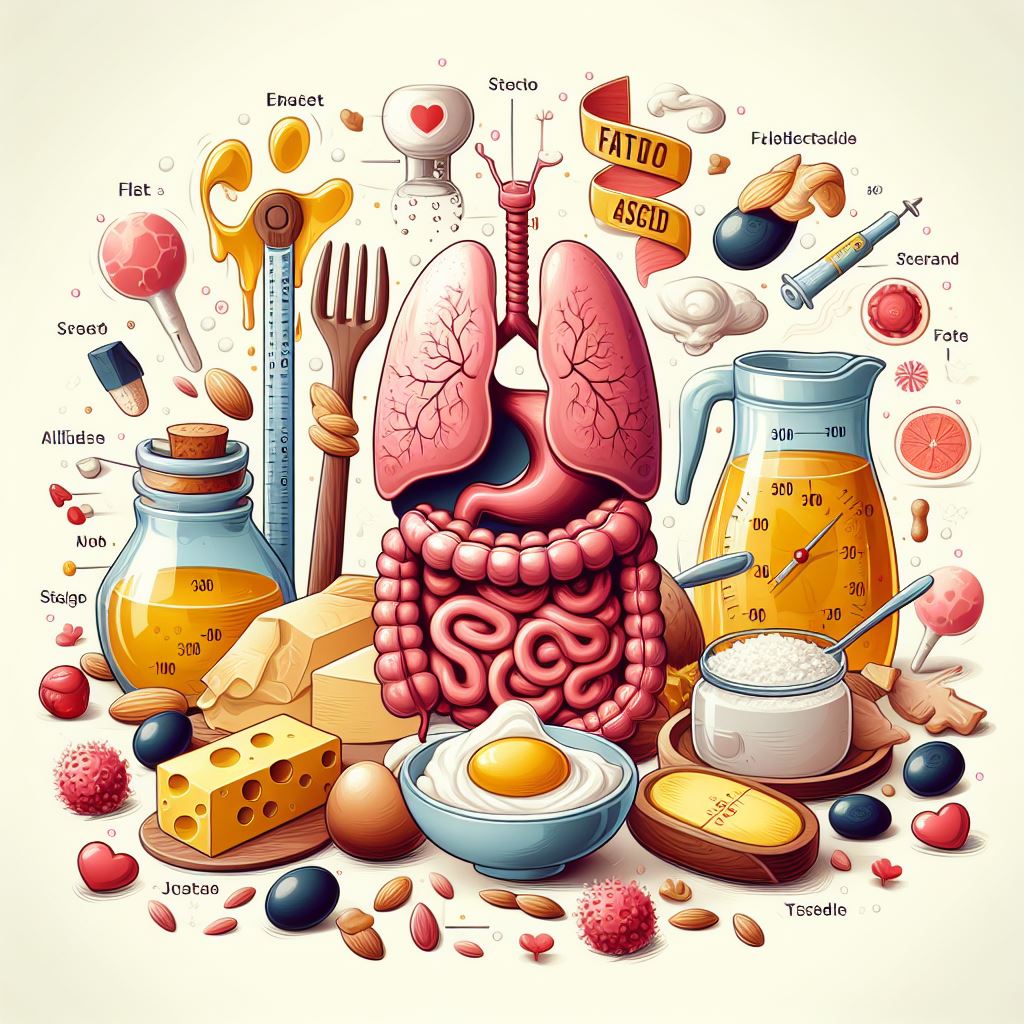脂肪的形成跟排出。
脂肪是一種重要的生物化學物質,是人體組織中的主要組成部分之一。它們在生理上扮演著多種重要角色,包括提供能量、保護器官、維持體溫、調節細胞功能以及作為脂溶性維生素的載體。人體的脂肪是通過一系列生物化學過程產生的,其中主要包括以下幾個步驟:
攝取和消化食物:食物中的脂肪和碳水化合物被身體攝取,並在消化系統中被分解成更小的分子,如脂肪酸和葡萄糖。
吸收和運輸:脂肪酸和葡萄糖等分子在消化道被吸收進入血液中,然後通過循環系統運輸到身體各個組織。
轉化和儲存:在肝臟和其他組織中,葡萄糖可以被轉化成脂肪酸,或者直接從飲食中攝取的脂肪酸可以被儲存起來。這些脂肪酸被合併成甘油三酯形式,然後儲存在脂肪細胞中,形成脂肪組織。
釋放和利用:當身體需要能量時,脂肪細胞會釋放甘油三酯,使其分解成脂肪酸和甘油。這些脂肪酸被運送到需要能量的組織,如肌肉組織,經過氧化代謝產生能量。
這些過程在身體內不斷進行,以滿足能量需求和維持代謝平衡。當攝入的能量超過身體消耗時,多餘的能量將以脂肪的形式儲存起來,導致體重增加;而當攝入的能量不足時,儲存在脂肪組織中的脂肪將被分解以提供額外的能量。脂肪排出人體的過程主要通過代謝進行,包括以下幾個步驟:
脂肪分解(Lipolysis):在代謝過程中,脂肪細胞中的三酸甘油酯被水解為甘油和脂肪酸,這一過程稱為脂肪分解。
脂肪氧化(Fat Oxidation):脂肪酸進入細胞的粒線體後,通過氧化進行代謝,最終生成能量、二氧化碳和水。這個過程稱為脂肪氧化。
能量利用(Energy Utilization):生成的能量在身體各個組織和器官中使用,包括肌肉收縮、細胞功能、體溫維持等。
代謝廢物排泄(Excretion of Metabolic Waste):脂肪氧化產生的代謝廢物,如二氧化碳和水,通過呼吸和排尿的方式從人體中排出。
總的來說,運動和正確的飲食是促進脂肪代謝和排出的重要因素。適當的運動有助於提高脂肪氧化的速率,而均衡的飲食則有助於調節脂肪分解和氧化的過程。另外,保持良好的代謝健康和正確的生活方式也是維持脂肪代謝正常的關鍵。
Fat is an essential biochemical substance and one of the main components of human tissues. It plays various important physiological roles, including providing energy, protecting organs, regulating body temperature, modulating cellular functions, and serving as carriers for fat-soluble vitamins.
The production of fat in the human body involves a series of biochemical processes, including the following steps:
Intake and digestion of food: Fats and carbohydrates in food are ingested by the body and broken down into smaller molecules, such as fatty acids and glucose, in the digestive system.
Absorption and transportation: Molecules like fatty acids and glucose are absorbed into the bloodstream from the digestive tract and then transported to various tissues in the body through the circulatory system.
Conversion and storage: In the liver and other tissues, glucose can be converted into fatty acids, or fatty acids directly obtained from the diet can be stored. These fatty acids are combined into triglycerides and stored in fat cells, forming adipose tissue.
Release and utilization: When the body needs energy, fat cells release triglycerides, which are then broken down into fatty acids and glycerol. These fatty acids are transported to tissues in need of energy, such as muscle tissue, where they undergo oxidation metabolism to produce energy.
These processes continue constantly in the body to meet energy needs and maintain metabolic balance. When the energy intake exceeds the body's expenditure, excess energy is stored as fat, leading to weight gain. Conversely, when energy intake is insufficient, fat stored in adipose tissue is broken down to provide additional energy.
The elimination of fat from the body primarily occurs through metabolism, which includes the following steps:
Fat breakdown (Lipolysis): Triglycerides in fat cells are hydrolyzed into glycerol and fatty acids during metabolism, a process known as lipolysis.
Fat oxidation : Fatty acids enter the cell's mitochondria and undergo oxidation metabolism, ultimately generating energy, carbon dioxide, and water. This process is called fat oxidation.
Energy utilization: The energy produced is used in various tissues and organs of the body, including muscle contraction, cellular functions, and maintenance of body temperature.
Excretion of metabolic waste: Metabolic waste products generated from fat oxidation, such as carbon dioxide and water, are excreted from the body through respiration and urination.
Overall, exercise and proper diet are crucial factors in promoting fat metabolism and elimination. Adequate exercise helps increase the rate of fat oxidation, while a balanced diet helps regulate the processes of fat breakdown and oxidation. Additionally, maintaining good metabolic health and adopting a healthy lifestyle are key to maintaining normal fat metabolism.




照片:DALLE3
- 1
- 2
- 3
- 4
